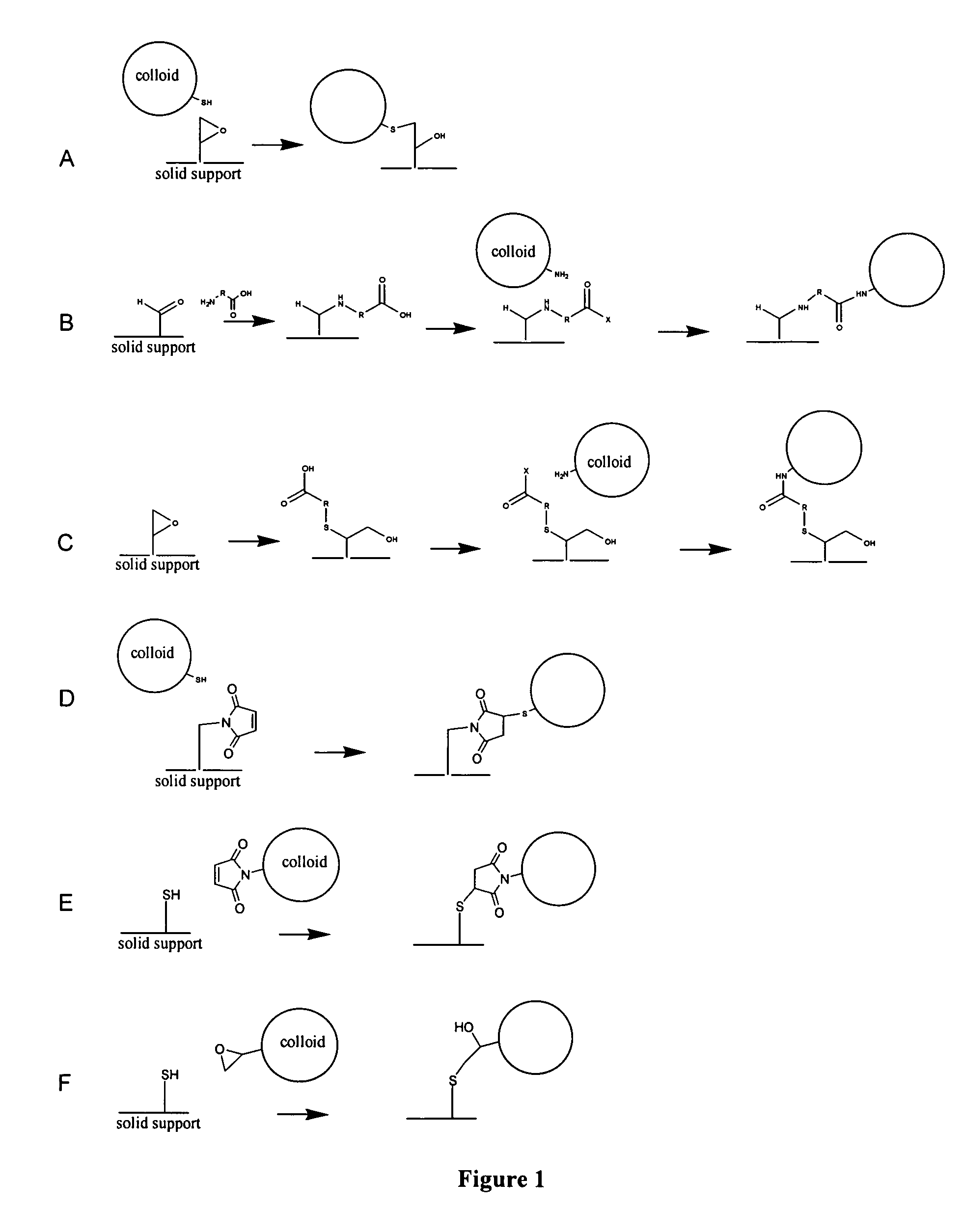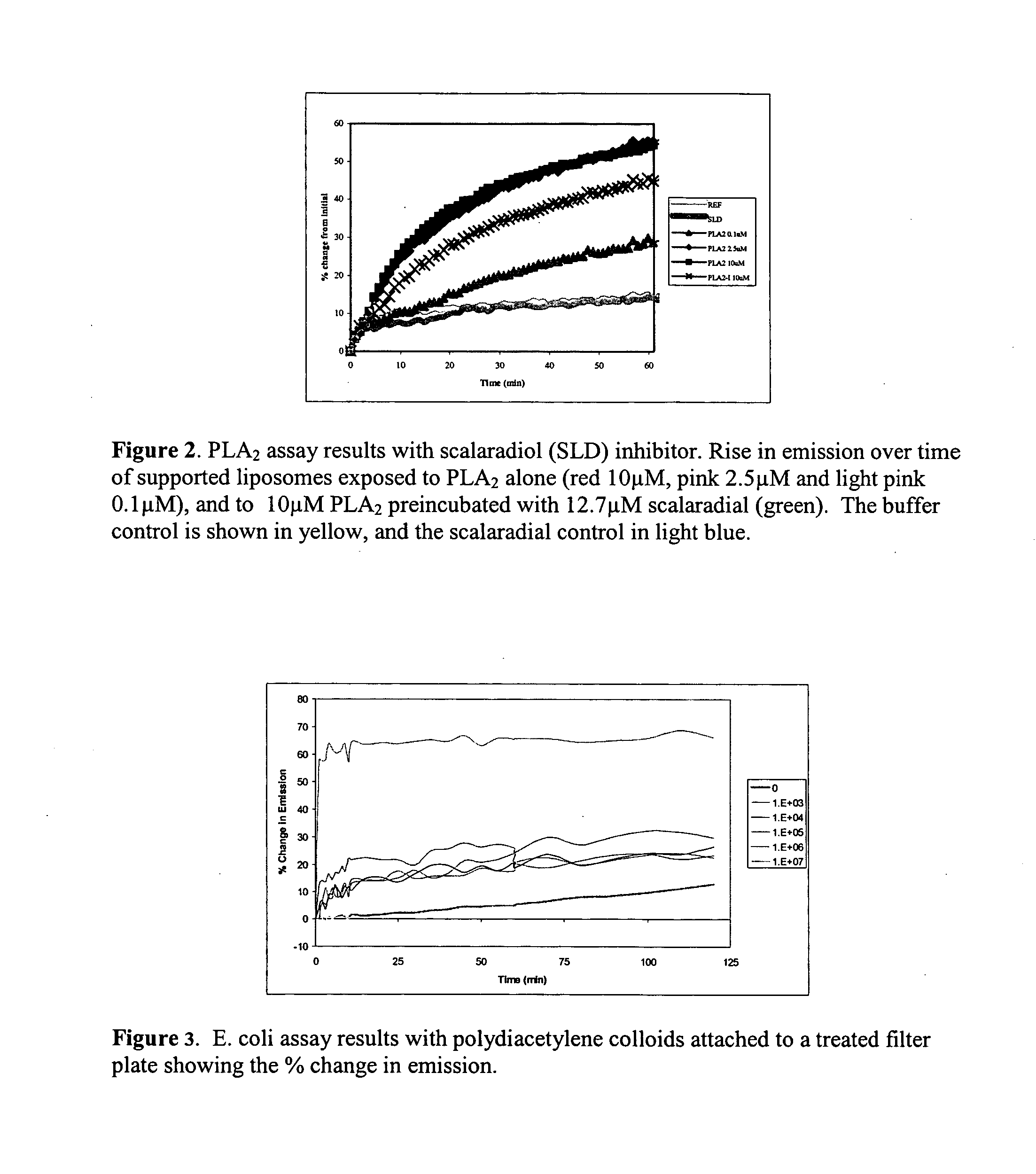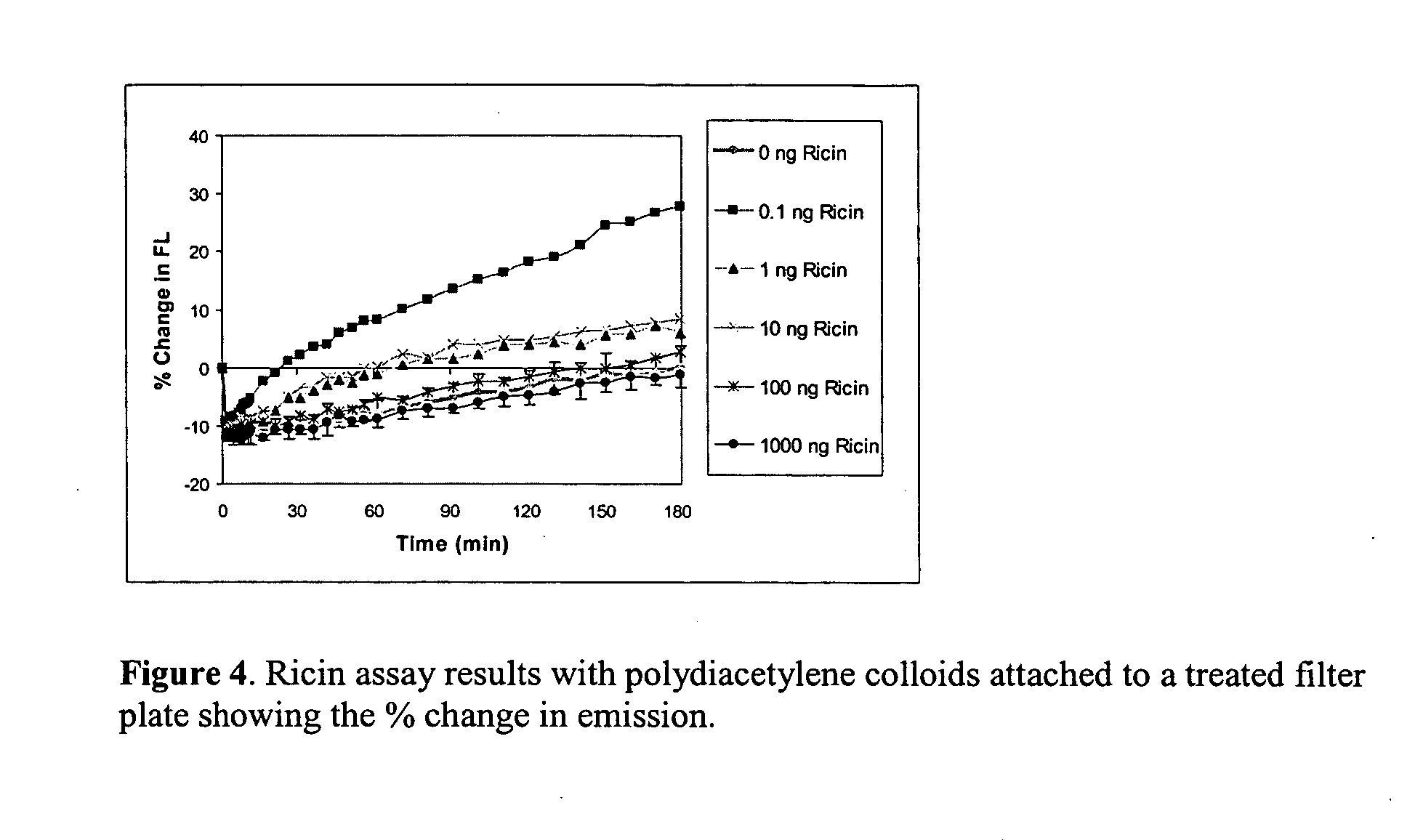Supported polydiacetylene 3-D arrays for flourescent or phosphorescent detection
a technology of phosphorescent detection and supported polydiacetylene, which is applied in the field of supported three-dimensional arrays, can solve the problems of limited the utility of these materials, difficult and slow transport of analytes through gels,
- Summary
- Abstract
- Description
- Claims
- Application Information
AI Technical Summary
Benefits of technology
Problems solved by technology
Method used
Image
Examples
example 1
[0085] Epoxy and aldehyde groups are added to the surfaces of the glass filter fibers as follows: the filter circles or filter plates are washed with absolute ethanol (200 μL / well in plates; enough to cover for free filter circles). A 4% (vol / vol) solution of 3-glycidoxy propyl trimethoxy silane (for epoxy groups) or 3-propylaldehyde triethoxy silane (for aldehyde groups) in 95% EtOH / 5% 0.1M acetate buffer at pH 4.8 is shaken for 2-3 minutes. Washed filters are covered with this solution; the solution is added to filters in plates at 100 μL / well. The filters and silane solutions are shaken for 20 minutes, the silane solutions decanted and the filters washed 1-2 times with absolute ethanol. The filters are then cured at room temperature in a desiccator charged with anhydrous calcium sulfate, for a minimum of 30 hours.
example 2
[0086] A diacetylene colloid solution is prepared consisting of 60% 6,8-docosadiynoic acid / 33% DMPC / 7% DPPT and incorporating fluorophore 1 at a ratio of one 1:200 lipids, at 2 mM lipid overall, in a combination of 4.8 mL of argon-sparged H2O and 0.2 mL 0.1M sodium borate, pH 7.9. After cooling to room temperature 100 μL / well of the colloid solutions are added to a Millipore glass filter B plates, which were previously functionalized with 3-glycidoxy propyl trimethoxy silane, as described in Example 1. The plate remains standing for 3 hours at room temperature and then the colloid solutions are decanted. The wells are washed with 200 μL / well of 10 mM sodium borate at pH 8.0 (borate buffer), two times. The wells are charged with 90 μL of borate buffer and 10 μL of 10% B-mercaptoethanol in borate buffer. The plate remains at room temperature for approximately one hour, and the solutions are decanted. The wells are then washed with 200 μL / well of borate buffer once, then with PBS (10 m...
example 3
[0088] A diacetylene colloid solution is prepared consisting of 60% 6,8-docosadiynoic acid / 33% DMPC / 7% P—NH2 and incorporating fluorophore 1 at a ratio of one 1:200 lipids, at 2 mM lipid overall, in a combination of 4.8 mL of argon-sparged H2O and 0.2 mL 0.1M sodium borate, pH 9.5. After cooling to room temperature, 100 μL / well of the colloid solutions are added to a Millipore glass filter B plates, which were previously functionalized with 3-propylcarboxyaldehyde triethoxy silane, as described in Example 1. The plate remains for 100 minutes at room temperature. Sodium cyanoborohydride is dissolved at 5M in 1M sodium hydroxide and then diluted to 0.5M with 0.1M sodium borate pH 8.5. 15 μL of this solution is added to the wells, the plate remains for 70 minutes and then 10 μL / well of 1M diethanolamine in H2O is added. The plate remains for 1 hour and then is decanted. The wells are washed two times with PBS (10 mM NaPO4 / 138 mM NaCl / 2.7 mM KCl at pH 7.4) two times. 150 μL of 50 mM TRI...
PUM
| Property | Measurement | Unit |
|---|---|---|
| thicknesses | aaaaa | aaaaa |
| pH | aaaaa | aaaaa |
| resistance | aaaaa | aaaaa |
Abstract
Description
Claims
Application Information
 Login to View More
Login to View More - R&D
- Intellectual Property
- Life Sciences
- Materials
- Tech Scout
- Unparalleled Data Quality
- Higher Quality Content
- 60% Fewer Hallucinations
Browse by: Latest US Patents, China's latest patents, Technical Efficacy Thesaurus, Application Domain, Technology Topic, Popular Technical Reports.
© 2025 PatSnap. All rights reserved.Legal|Privacy policy|Modern Slavery Act Transparency Statement|Sitemap|About US| Contact US: help@patsnap.com



